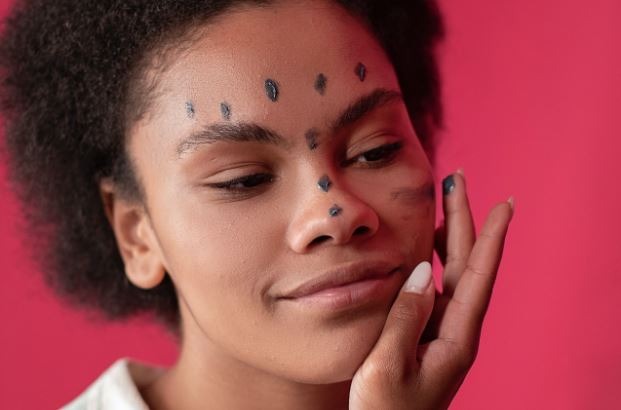If you have been experiencing acne for an extended period, having it eliminated is one of the finest experiences you can have. However, your happiness will be short-lived because you will soon acquire acne scars, which are far more irritating than the acne that caused it. VIsit Dermavel for ways to remove acne scars.
Knowing how to best treat acne scars should be your first goal, especially if you are beginning to experience them. Once you have enough knowledge, you can quickly go to your local dermatologist and ask for a consultation. Getting accurate information on the internet is an excellent place to start.
This post will take you through every step of the acne scar treatment process so that you can avoid obtaining them in the first place.
Acne Scars
Scars come in a variety of shapes and sizes, which you usually don’t notice. It may appear that it is the same, but it is not.
Acne scars arise when skin tissue is destroyed as a result of acne. Picking at and popping pimples can cause irreversible harm to your skin as well as scarring. Although you may be extremely gentle with your skin, scars are still possible.
Acne scarring increases in severe blemishes and is highly red and inflammatory. If you have a history of scarring, even minor imperfections can result in a permanent mark.
There are different types of therapies for various forms of acne scars. Acne scars can come in a variety of shapes and sizes, including the following:
Ice pick scars
Ice picks are deep holes in the skin that are frequently referred to as pockmarks on the skin.
Boxcar scars
These scars are depressions that are circular or oval.
Rolling scars
Scars of this type are the most prevalent. They can develop when bands of scar tissue from beneath the skin’s surface. This results in an irregular texture of the skin.
Atrophic scars
Even though these scars are depressed, they are often smaller and shallower in appearance than boxcar and rolling scars.
Hypertrophic scars
It appears as though these scars are elevated.
Keloid scars
These have a lumpy texture and are thick and uneven in shape.
After learning about the different types of scars, it’s crucial to understand the many treatments available in a dermatology clinic to help eliminate them.
Chemical Peels
During this operation, a dermatologist administers a chemical to the upper layer of the skin to scrape it. Chemical peels can be utilized for various reasons, each with its benefits. For ice pick scars, trichloroacetic acid (TCA) cross-hatching is beneficial to the skin. Other chemical peels are more useful in the treatment of the discoloration. Mild chemical peels are also often used to relieve severe acne, but they are more expensive.
Microneedling
In this treatment, a device is used to make minute pricks on the skin, then removed. This technique encourages healing, which can help minimize the appearance of acne scars. Microneedling is often performed in the dermatology clinic.
Laser Treatments
There are two types of laser treatments available:
- Ablative
- Non-ablative
Ablative lasers are used to rejuvenate the skin by eliminating the outer layers of the skin. Non-ablative lasers induce alterations in the dermis, the second layer of skin, but they do not burn the skin. They accomplish this without causing any damage to the skin’s surface.
Generally speaking, these lasers are most effective for mild acne scars and pigmentation issues. On the other hand, deep, pitted scars are more challenging to treat. Pulsed dye lasers, a type of non-ablative laser used to treat raised scars and keloids, are sometimes used to treat these conditions.
Subcutaneous Incision
Subcision is another term used to refer to subcutaneous incision. Treatment of rolling acne scars and some depressed acne scars is possible with this product. Subcision is a straightforward surgical operation that can be completed under a local anesthetic.
A needle or a small scalpel is introduced parallel to the skin’s surface, and the procedure is completed. The tool removes the bands of tissue that bind the skin to deeper structures under the surface. Following the release of these bands, there is a noticeable lift in the skin. This results in a more refined appearance.
Dermal Fillers
Dermal fillers are another option for treating acne scars that have become depressed. The scar is filled with a material that is injected into it. This raises the base of the scar, allowing it to be more level with the skin’s surface as a result. Because the results aren’t lasting, it is necessary to repeat the procedure after a few months.
Dermabrasion
Dermabrasion is a procedure that is conducted at the dermatologist’s clinic. The top layers of the skin are rubbed with a wire brush that rotates rapidly. After mending, the scars appear softer and uneven scars aren’t as deep as they were previously.
Dermabrasion is used to address depressed boxcar scarring that has become depressed. This operation may make ice-pick scars appear more noticeable. Because ice pick scars are narrow at the skin’s surface but broaden near the base, this is the case.
Dermabrasion was long considered the gold standard in acne scar treatment, but it is now being replaced with laser resurfacing as the preferred method of treating acne scars. However, if you still prefer this, go ahead and do your thing!
Final Thoughts
Whatever treatment you pick, be sure you are familiar with the fundamentals of the procedure before making a decision. If you don’t understand things, you can always ask for a more detailed explanation of the process.


